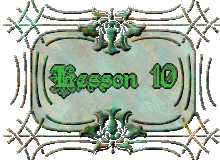




Magistral Herbal Pharmacy (Description and Characteristics); Definitions Employed in Magistral Herbal Pharmacy (Prescription, Remedy, Medicine, Drug, Pharmacy, Pharmacology, Pharmacopoeia, Therapeutics, Preparations, Official, Dispensatory, Materia Medica, etc.); The Form and Language of Herbal Prescriptions (Parts of a Prescription, and the Language of Prescription-Writing); The Grammatical Construction and Composition of Prescriptions (Procedure or Method for Writing a Prescription, Aids in Determining the Quantity of Ingredients, The Use of Latin Words and Phases in Prescriptions, Method of Allotting Quantities (Gravimetric and Volumetric Prescriptions); The Names of Herbal Medicines; Symbolic Characters Used in Apothecary Prescriptions; Formation of the Genitive Case-Endings; Rules for the Use of Abbreviations, Words and Phrases; Rules for Pronunciation.



Handling the Herbal Prescription (Receiving and Reading the Prescription, Omissions and Errors, Additions or Alterations to Prescriptions by the Herbal Pharmacist, Numbering and Dating the Prescription; Prescription Labels; Filling and Checking the Prescription, and the Finished Prescription); Prescription Ethics (The Prescribing of Placebos, "Specifying" in Prescriptions, Prescription Renewals and Prescription Blanks, and Ownership and Cost of the Prescription); Directions for the Herbal Pharmacist and for the Patient; List of Contractions and Latin Phrases Used in Prescription Writing (With the Corresponding English Equivalents).



The Structure and Composition of Extemporaneous Compounding (Choice of Ingredients, and Aids in Determining the Quantity of Ingredients); Principles of Medical Combination (The Combined or Joint Action of Several Plant Drugs Upon a Particular Tissue, Organ or Center, Action Upon Different Tissues, Organs or Centers [or to Combat Several Symptoms]; Augmenting, Correcting or Modifying the Action or Effect of a Plant Drug, Preparing a Suitable Form for New Compounds [or Special Combinations], and Providing a Convenient, Pleasant and Efficient Method of Administration); Extemporaneous Prescription Compounding (Liquid Prescriptions, Use of Heat in Compounding Extemporaneous Solutions, Filtration, Aids in Effecting Solution, Order of Mixing, and Mixtures).



Description, History and Characteristics of Incompatibility; Types of Incompatibility (Therapeutic, Physical or Pharmaceutical, and Chemical); Evidence of Incompatibility (Insoluble Salts, and Explosive or Poisonous Compounds); Dangers of Incompatibility; Correction of Incompatibilities (Addition, Omission or Change of an Ingredient, Compounding by a Special Technique, Addition of an Inert Constituent, Changing the Character of the Solvent, Emulsification, Adding the Ingredients in a Certain Order, and Increasing the Bulk of the Prescription by Adding Additional Amounts of the Vehicle); Incompatibilities by Prescription Classes--- Liquid Preparations for Internal Use (Insoluble Ingredients in the Prescribed Vehicle, Occurrence of Precipitation Due to Chemical Reaction, Observation of Color Changes, and Production of Gases), Eye Lotions, Nasal Drops and Sprays, Lotions and Liniments, Ointments, Powders, Capsules and Similar Products; Examples of Therapeutic, Physical and Chemical Incompatibilities; Table of Solubilities; Summary of Important Incompatibilities (Chemical Substances and Plant Drugs).



Definition of Metrology; History of Weights and Measures (The English System, The Metric or Decimal System, and the French System); Orthography, Pronunciation and Reading; Weights (The English System and the Metric System); Measures (The English System, The Metric System, and Common or Fluid Measures); The Relationship of Weights and Measures; Approximate or Domestic Measures (Approximate Dose Equivalents of Weights and Measures, and Equivalents of Linear Measure); Rules for Conversion and Conversion Tables; Weighing and General Description of the Balance; Hand and Counter Scales (Single-Beam Equal Arms, Single-Beam Unequal Arms, Double-Beam Unequal Arms, Compound Lever Balance, Analytical Balance, and Torsion Balances); The Proper Care and Maintenance of Balances (The Tests of a Balance, and Protection of Balances); Weights Employed in Herbal Pharmacy (Common Avoirdupois Weights, Apothecaries Weights, Metric Weights, and Prescription Weights); Measuring (Measuring Large Quantities, Glass Measures, The Meniscus, Measuring Small Quantities, Minim Pipettes, and Drop Measures).



Description and Characteristics of Dosage Regulation; Herbal Posology (Determination of Proper Dosage in Relation to Age, Bodily Weight and Size, Sex or Gender, Idiosyncrasy [Personal Peculiarities], Tolerance, Temperament, Climate, Personal Habits, Lifestyle, Mental Activity, Temporary Conditions, Time of Administration, and Past or Present Disease-Conditions); Tables of Adjusted Dosages; Doses for Official and Unofficial Plant Drugs and Their Preparations; Doses of Pharmaceutical Preparations and Substances.



General Guidelines for the Application and Administration of Plant Drugs; Methods of Application and Administration of Medicines (Application and Administration to the Skin [or External Integument], to the Mucous Surfaces [or Internal Integument], by Way of the Subcutaneous Areolar Tissues, by Intravenous Injection, to the Muscular Tissues, by Intraspinal Puncture, and by Intraperitoneal Injection); General Methods of Applying Remedies to the Skin (Oral, Rectal, Nasal, Enepidermatic, Epidermatic and Endermatic); General Methods of Applying Remedies to the Mucous Surfaces (Nasal or Pituitary Membranes, Tracheo-Bronchial Membranes, Gastro-Intestinal Membranes, Recto-Colic Membranes, Urino-Genital Membranes, and Utero-Vaginal Membranes); Measuring and Dispensing of Medicines (Pouring, Dropping, Measuring and Storage Vehicles, Flavors and Corrigents, and Coloring Agents); Dispensing Liquids (Selection and Use of Containers and Related Apparatus); Percentage Solutions and Dispensing Tables.



Introduction and Rationale; General Herbal Formulations for Various Ailments and Disease-Conditions (Numbered 1-300).



General Herbal Formulations for Various Ailments and Disease-Conditions (Numbered 301-600).



General Herbal Formulations for Various Ailments and Disease- Conditions (Numbered 601-800); Miscellaneous Herbal Formulations (Numbered 801-1000).
